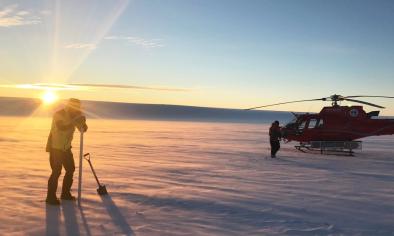Science Source
Seasonal evolution of supraglacial lakes on an East Antarctic outlet glacier
- States that supraglacial lakes (any pond of liquid water on the top of a glacier) are known to influence ice melt and ice flow on the Greenland ice sheet and potentially cause ice shelf disintegration on the Antarctic Peninsula
- States that scientific understanding of supraglacial lake behavior and impacts in East Antarctica is more limited
- Provides the first multiyear analysis of lake evolution on Langhovde Glacier, Dronning Maud Land (69°11′S, 39°32′E) using >150 optical satellite images and meteorological records from 2000 to 2013
- Maps 7990 lakes and 855 surface channels up to 18.1 km inland (~670 m above sea level) from the grounding line
- Documents three pathways of lake demise: (i) refreezing, (ii) drainage to the englacial/subglacial environment (on the floating ice), and (iii) overflow into surface channels (on both the floating and grounded ice)
- Concludes that the parallels between these mechanisms, and those observed on Greenland and the Antarctic Peninsula, suggest that lakes may similarly affect rates and patterns of ice melt, ice flow, and ice shelf disintegration in East Antarctica
Related Content
Headline

Jan 29, 2020 | BBC News
Journey to the 'doomsday glacier'
Headline

Nov 22, 2019 | NOAA Climate.gov
Understanding climate: Antarctic sea ice extent
Headline

Mar 26, 2019 | The Guardian
Australian researchers find huge lakes beneath largest east Antarctic glacier
Science Source
| Geophysical Research Letters
Mass Loss of Totten and Moscow University Glaciers, East Antarctica, Using Regionally Optimized GRACE Mascons
Yara Mohajerani, Isabella Velicogna, Eric Rignot


